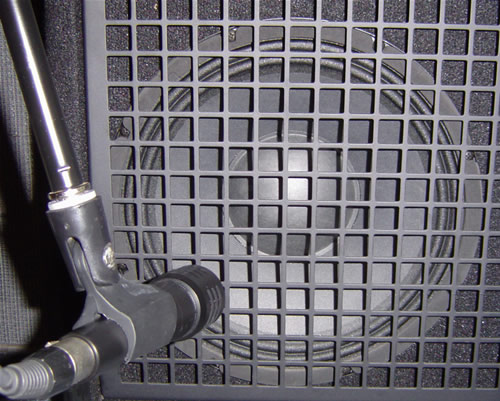Home recording and studio techniques used in Apell tracks explained include recording vocals, guitar & bass and the use of effects before and after recording them.
Recording Guitars
There are several ways to record guitars from miking a guitar amp to plugging the guitar straight into your mixer. One of the easiest ways to record guitars is to use an effects unit such as the Line 6 Pod which has become extremely popular due to its flexibility in tone and range of effects including distortion, chorus, delay and more. These sorts of effect units also allow you to emulate speaker cabinets from combo amps to quad boxes. While not always as good as the real thing it makes it much easier to get a decent guitar sound without getting complaints from the neighbours!
It is usually best to record the guitars with the effects treating the sound as it allows the player to react to and play with the sound appropriately whether it be simple distortion or delay. Further effects can be added after the guitar is recorded such as reverbs and delay or even more distortion if you want an even heavier or industrial sound. An example of a track where the guitars were recorded like is Digirap where the recording with the distortion was essential to get the heavy rock feel of the track.
If you want to record a bit of guitar feedback ala Jimi Hendrix, the best way to do this is to crank up an amp and stick a microphone in front of it. The microphones that are best for this short of job are mikes like the Shure SM57 or similar. If you have a few microphones handy experiment until you find one that sounds the best to you.
It is best to place the microphone to point at the corner of the guitar amp speaker as pointing it directly towards the centre of the speaker can make the tone overly harsh and bright. Generally the microphone should only be a few inches away from the speaker to prevent other unwanted background sounds being recorded and to minimise any unwanted reverb from the room you are recording in. Note that the closer the microphone is to the speaker the bassier the sound will be due to what is known as the “proximity effect”.

|